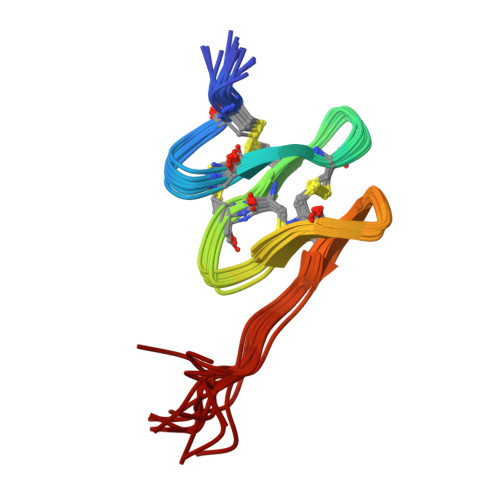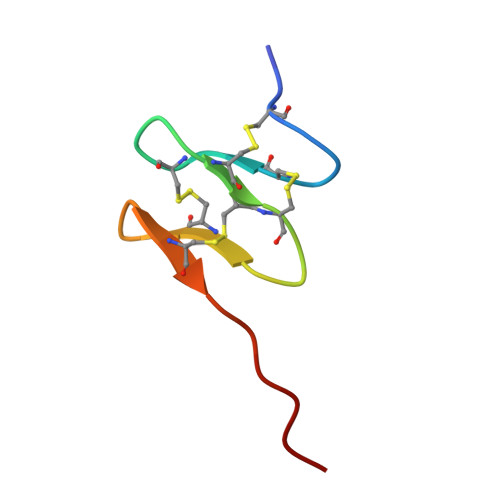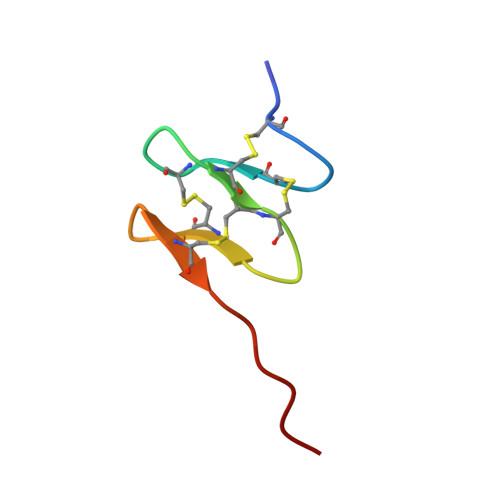Conotoxin phi-MiXXVIIA from the Superfamily G2 Employs a Novel Cysteine Framework that Mimics Granulin and Displays Anti-Apoptotic Activity.
Jin, A.H., Dekan, Z., Smout, M.J., Wilson, D., Dutertre, S., Vetter, I., Lewis, R.J., Loukas, A., Daly, N.L., Alewood, P.F.(2017) Angew Chem Int Ed Engl 56: 14973-14976
- PubMed: 28984021
- DOI: https://doi.org/10.1002/anie.201708927
- Primary Citation of Related Structures:
6PPC - PubMed Abstract:
Conotoxins are a large family of disulfide-rich peptides that contain unique cysteine frameworks that target a broad range of ion channels and receptors. We recently discovered the 33-residue conotoxin Φ-MiXXVIIA from Conus miles with a novel cysteine framework comprising three consecutive cysteine residues and four disulfide bonds. Regioselective chemical synthesis helped decipher the disulfide bond connectivity and the structure of Φ-MiXXVIIA was determined by NMR spectroscopy. The 3D structure displays a unique topology containing two β-hairpins that resemble the N-terminal domain of granulin. Similar to granulin, Φ-MiXXVIIA promotes cell proliferation (EC 50 17.85 μm) while inhibiting apoptosis (EC 50 2.2 μm). Additional framework XXVII sequences were discovered with homologous signal peptides that define the new conotoxin superfamily G2. The novel structure and biological activity of Φ-MiXXVIIA expands the repertoire of disulfide-rich conotoxins that recognize mammalian receptors.
Organizational Affiliation:
Institute for Molecular Bioscience, The University of Queensland, St Lucia, Queensland, 4072, Australia.
















